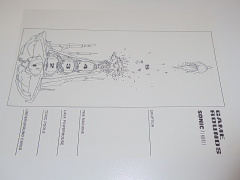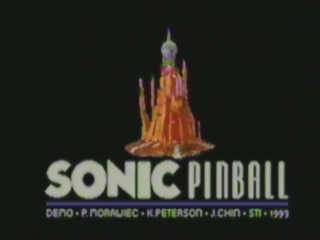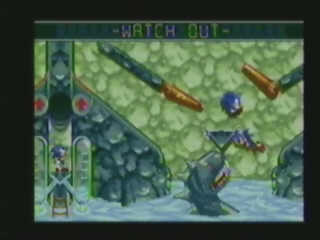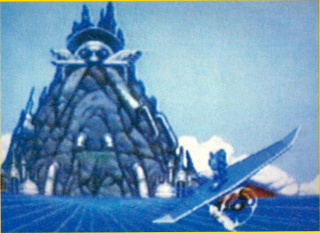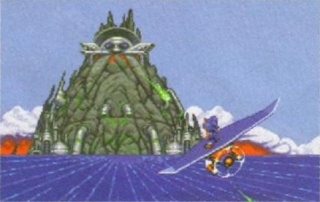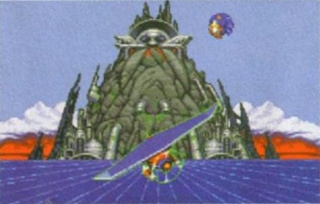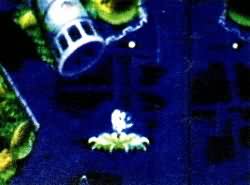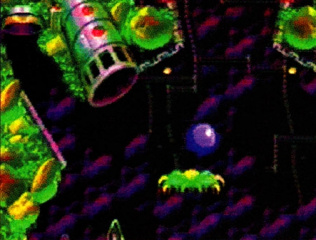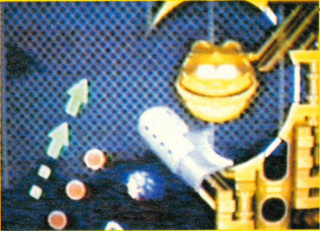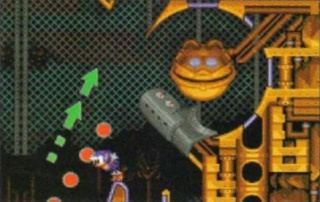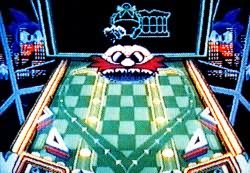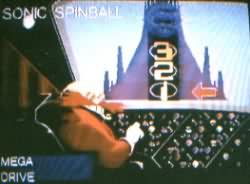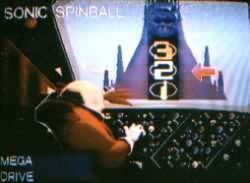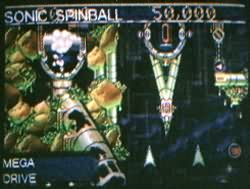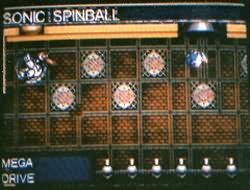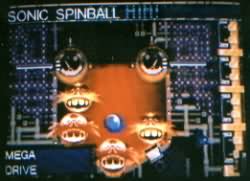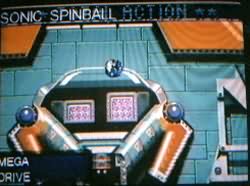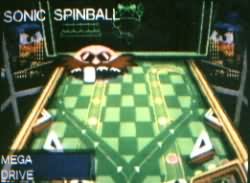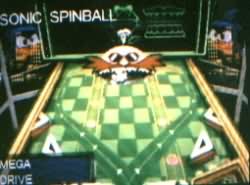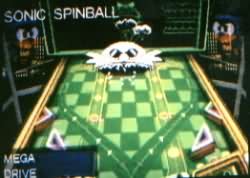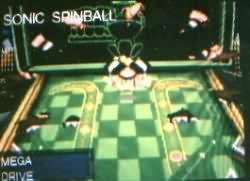Difference between revisions of "Sonic the Hedgehog Spinball/Development"
From Sonic Retro
m (→Music and sound) |
m (→Music and sound: clarification) |
||
| Line 27: | Line 27: | ||
Two versions of ''Sonic the Hedgehog Spinball'' are commonly available: an "earlier" ROM which features two short jingles previously used in ''[[Sonic the Hedgehog (16-bit)|Sonic the Hedgehog]]'', and a "later" ROM which replaces the jingles with new songs. As the former jingles were not composed in-house at [[Sega]], instead being created by [[Masato Nakamura]] of the Japanese pop band [[Dreams Come True]], Sega did not hold the license to use the music in other games - something the developers [[Sega Technical Institute]] were unaware of. When [[Hirokazu Yasuhara]] revealed this fact during the game's official wrap party, STI's composer [[Howard Drossin]] was forced to compose last-minute replacements for the offending tracks.{{ref|1=https://web.archive.org/web/20110430221050/https://www.sega-16.com/feature_page.php?id=234&title=Developer%27s%20Den:%20Sega%20Technical%20Institute}} | Two versions of ''Sonic the Hedgehog Spinball'' are commonly available: an "earlier" ROM which features two short jingles previously used in ''[[Sonic the Hedgehog (16-bit)|Sonic the Hedgehog]]'', and a "later" ROM which replaces the jingles with new songs. As the former jingles were not composed in-house at [[Sega]], instead being created by [[Masato Nakamura]] of the Japanese pop band [[Dreams Come True]], Sega did not hold the license to use the music in other games - something the developers [[Sega Technical Institute]] were unaware of. When [[Hirokazu Yasuhara]] revealed this fact during the game's official wrap party, STI's composer [[Howard Drossin]] was forced to compose last-minute replacements for the offending tracks.{{ref|1=https://web.archive.org/web/20110430221050/https://www.sega-16.com/feature_page.php?id=234&title=Developer%27s%20Den:%20Sega%20Technical%20Institute}} | ||
| − | The commonly-held belief is that the former version was accidentally released in limited quantities, with two versions of ''Spinball'' commercially available in the United States. However, modern investigation has revealed that said version may have never been released at all.{{ref|1=https://web.archive.org/web/20230725101353/https://forums.sonicretro.org/index.php?threads%2Fis-sonic-spinball-alternate-music-actually-a-prototype.38437%2F}} STI artist [[Craig Stitt]] recalls that Howard Drossin's replacement tracks were composed the night of the wrap party, with the company having produced a "new gold master version of the game"{{ref|1=https://web.archive.org/web/20110430221050/https://www.sega-16.com/feature_page.php?id=234&title=Developer%27s%20Den:%20Sega%20Technical%20Institute}} - implying the earlier version never left company offices in any official capacity. | + | The commonly-held belief is that the former version was accidentally released in limited quantities, with two versions of ''Spinball'' commercially available in the United States. However, modern investigation has revealed that said version may have never been released at all.{{ref|1=https://web.archive.org/web/20230725101353/https://forums.sonicretro.org/index.php?threads%2Fis-sonic-spinball-alternate-music-actually-a-prototype.38437%2F}} STI artist [[Craig Stitt]] recalls that Howard Drossin's replacement tracks were composed the night of the wrap party, with the company having produced a "new gold master version of the game"{{ref|1=https://web.archive.org/web/20110430221050/https://www.sega-16.com/feature_page.php?id=234&title=Developer%27s%20Den:%20Sega%20Technical%20Institute}} - implying the earlier version never left company offices in any official capacity. Further, no one has been able to confirm if any official retail copy has ever contained this version. The currently-available ROM has been altered with an invalid portion of its serial number, GN NK, which is invalid and doesn't exist in any other retail Mega Drive dump. However, it does appear on a few releases from the scene group SNEAKERS, known for having released a number of contemporary [[Sega]] games. Additionally, this earlier ROM is dated October 13, 1993 - a full month before the game's confirmed retail release.{{ref|1=https://web.archive.org/web/20230725101353/https://forums.sonicretro.org/index.php?threads%2Fis-sonic-spinball-alternate-music-actually-a-prototype.38437%2F}} |
Outside of the United States, ''Spinball'' received minor changes. The Japanese version is identical to the final American version, but with the abrasive "hee-haw" death jingle replaced with a new composition. The European version is also identical to the final American music, with some additional music changes. The Options theme was sped up, the Introduction tune was extended, and the music of [[Lava Powerhouse]] was sped up and bugfixed to prevent the PSG from dying off after the music looped once. The Boss music was also bugfixed to prevent the instruments from the stage's music playing before it looped, and the previously-mentioned "hee-haw" sound is slower. | Outside of the United States, ''Spinball'' received minor changes. The Japanese version is identical to the final American version, but with the abrasive "hee-haw" death jingle replaced with a new composition. The European version is also identical to the final American music, with some additional music changes. The Options theme was sped up, the Introduction tune was extended, and the music of [[Lava Powerhouse]] was sped up and bugfixed to prevent the PSG from dying off after the music looped once. The Boss music was also bugfixed to prevent the instruments from the stage's music playing before it looped, and the previously-mentioned "hee-haw" sound is slower. | ||
Revision as of 21:33, 10 September 2023
- Back to: Sonic the Hedgehog Spinball.

|
This article needs cleanup. This article needs to be edited to conform to a higher standard of article quality. Specifically, issues with this article are:
Put all talk of version comparisons on the comparison pages
After the article has been cleaned up, you may remove this message. See How to Edit a Page for help. |
Sonic the Hedgehog Spinball underwent several changes over the course of its development.
Contents
Development

The successful release of Sonic the Hedgehog 2 allowed the Sonic the Hedgehog franchise, and Sega as a whole, to soar to new heights during 1993. The next logical step was to start work on Sonic the Hedgehog 3. However, delays in production meant it was unlikely to make a Christmas 1993 release date.[1] Wishing to capitalize on the most profitable trading season of the year, a number of smaller Sonic the Hedgehog games were commissioned, among which became Sonic Spinball.
Sonic Team had moved to the United States to develop Sonic 2, with the project becoming a joint effort between the Japanese staff of the original game and Sega Technical Institute. However, a decision was made to keep STI away from Sonic 3's development, leading the group to pursue other projects. Spinball was one such concept - devised entirely by STI with virtually no input from Sonic Team, it stands as the first entirely Western-produced Sonic game, and the first specifically designed with a Western audience in mind.
The third-party development studio Polygames handled around 90% of the programming, while Sega Technical Institute members handled the graphics, design, and music. The game was produced in the span of nine months, with Polygames founders Lee Actor and Dennis Koble being hired as programmers to get the project out the door. Spinball was programmed in the C programming language, when the norm for Mega Drive games of the era was 68K assembly.[1]
Rounds
Early concept art depicts the Veg-O-Fortress being used as a map screen.[2]
1. Underground Caves
2. Toxic Pools
3. Lava Powerhouse
4. The Machine
5. Eruption
The final game contains only four rounds, with Underground Caves and Toxic Pools being replaced by Toxic Caves, perhaps combining the two concepts. In the 8-bit version, the name Toxic Pools is retained. Meanwhile, Eruption was renamed Showdown in the 16-bit version and Final Showdown in the 8-bit version.
Music and sound
| “ | "Well, no one had told us about this, and we had used the original music. Howard, our music guy, quickly ran to his little room and started writing a new piece of music. At about midnight that night we released a NEW gold master version of the game, this time with our own original theme song." | „ |
| — Artist Craig Stitt[3] | ||
Two versions of Sonic the Hedgehog Spinball are commonly available: an "earlier" ROM which features two short jingles previously used in Sonic the Hedgehog, and a "later" ROM which replaces the jingles with new songs. As the former jingles were not composed in-house at Sega, instead being created by Masato Nakamura of the Japanese pop band Dreams Come True, Sega did not hold the license to use the music in other games - something the developers Sega Technical Institute were unaware of. When Hirokazu Yasuhara revealed this fact during the game's official wrap party, STI's composer Howard Drossin was forced to compose last-minute replacements for the offending tracks.[3]
The commonly-held belief is that the former version was accidentally released in limited quantities, with two versions of Spinball commercially available in the United States. However, modern investigation has revealed that said version may have never been released at all.[4] STI artist Craig Stitt recalls that Howard Drossin's replacement tracks were composed the night of the wrap party, with the company having produced a "new gold master version of the game"[3] - implying the earlier version never left company offices in any official capacity. Further, no one has been able to confirm if any official retail copy has ever contained this version. The currently-available ROM has been altered with an invalid portion of its serial number, GN NK, which is invalid and doesn't exist in any other retail Mega Drive dump. However, it does appear on a few releases from the scene group SNEAKERS, known for having released a number of contemporary Sega games. Additionally, this earlier ROM is dated October 13, 1993 - a full month before the game's confirmed retail release.[4]
Outside of the United States, Spinball received minor changes. The Japanese version is identical to the final American version, but with the abrasive "hee-haw" death jingle replaced with a new composition. The European version is also identical to the final American music, with some additional music changes. The Options theme was sped up, the Introduction tune was extended, and the music of Lava Powerhouse was sped up and bugfixed to prevent the PSG from dying off after the music looped once. The Boss music was also bugfixed to prevent the instruments from the stage's music playing before it looped, and the previously-mentioned "hee-haw" sound is slower.
Prerelease
Sonic Pinball demonstration
The game's creation came about as a result of Sega of America's marketing department showing interest in utilizing Sonic 2's Casino Night Zone for a potential new Sonic project.[1] A short animated pitch, titled Sonic Pinball, was soon created by Sega Technical Institute's Peter Morawiec, Kurt Peterson, and Justin Chin. Recycling graphics from Sonic 2 (a common theme across the game), the demo features elements from what would become Toxic Caves, albeit with an entirely different set of graphics and music.
The demo was produced only 2-3 days before Winter CES 1993, with Peterson creating the game's art and Morawiec producing its programming.[1] Drawing inspiration from the popular Amiga game Pinball Dreams, the layout was designed to look like a real pinball table, and a MOD file from the Amiga demoscene was used as background music.[1] It is unknown if the video was actually shown at Winter CES 1993. However, a copy of the VHS tape was retained and eventually digitized, where it can now be easily found online.[5]
Summer CES 1993
Sonic Spinball was announced to the public under its new name at Summer CES 1993 in Chicago, with a teaser video playing on the show floor.[6] It was one of three games scheduled for release on "Sonic Mania Day" at some point in November, alongside Sonic the Hedgehog CD and the Game Gear version of Sonic Chaos. Prior to the event, Sega had listed a Sonic 3 on its release schedules, but were quick to point out that Spinball was not the game being referenced, and would ship with only an 8-megabit cartridge.[6]
While in a more recognizable state than Spinball's previous appearances, the video on display was not real gameplay footage. Sonic's animations boasted a notably-low framerate, and appearances from both Toxic Caves and Lava Powerhouse demonstrated a number of design and layout differences when compared to the final game.
A slightly different title screen, with "The Hedgehog" being positioned on the right hand side.[7]
The introduction cutscene takes place in a different time of day. The mountain also isn't symetrical.[7]
This platform doesn't exist in the final game, and all the lights are missing.[9]
You can't stand on these slingshots in the final game.[8]
You can't trigger this balancing animation either - it was changed in the final.[10]
Aside from getting in the way, the platform doesn't seem to do much.[10]
The slingshots in Lava Powerhouse can be stood on too.[8]
A very different iteration of the Robo Smile Bonus Stage, with added "tracks" and missing details. Animations are used on the back glass instead of text
¡Atencion! Mezcla Explosiva: Especial Eternal Champions
Sonic Spinball footage was included in the Spanish promotional VHS ¡Atencion! Mezcla Explosiva: Especial Eternal Champions.
Curiously this scene from the end of Showdown is missing... Robotnik. Sonic just bounces aimlessly on some glass.
Concept art
Early sketches for the box art cover, with logos. Uses the early title of Sonic Pinball. Features an alternate design of Scorpius.
An early sketch of the Veg-O-Fortress as a map screen, with early round list.
References
- ↑ 1.0 1.1 1.2 1.3 1.4 Interview: Peter Morawiec (2007-04-20) by Sega-16
- ↑ File:Sonic Spinball game rounds concept art.jpg
- ↑ 3.0 3.1 3.2 https://www.sega-16.com/feature_page.php?id=234&title=Developer%27s%20Den:%20Sega%20Technical%20Institute (Wayback Machine: 2011-04-30 22:10)
- ↑ 4.0 4.1 https://forums.sonicretro.org/index.php?threads%2Fis-sonic-spinball-alternate-music-actually-a-prototype.38437%2F (Wayback Machine: 2023-07-25 10:13)
- ↑ http://www.youtube.com/watch?v=zlmmDh5gMB0
- ↑ 6.0 6.1 File:SegaPro UK 22.pdf, page 16
- ↑ 7.0 7.1 7.2 File:MeanMachinesSega10UK.pdf, page 11
- ↑ 8.0 8.1 8.2 8.3 File:SegaVisions US 14.pdf, page 32
- ↑ 9.0 9.1 File:MeanMachinesSega10UK.pdf, page 10
- ↑ 10.0 10.1 File:EGM US 049.pdf, page 139
- ↑ File:EGM US Supplement 051 SuperTour93.pdf, page 19
- ↑ File:Joypad FR 022.pdf, page 45
| Sonic the Hedgehog Spinball (16-bit) | |
|---|---|
|
Main page Manuals |
show;hide
|
